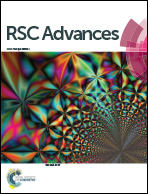Fe2(SO4)3·xH2O on silica: an efficient and low-cost catalyst for the direct nucleophilic substitution of alcohols in solvent-free conditions†
Abstract
Fe2(SO4)3·xH2O on silica has been found to be a novel efficient catalyst for the direct nucleophilic substitution of alcohols in solvent-free conditions. In this reaction system, the alcohols can react with various nucleophilic reagents for the convenient construction of C–C bonds and C–N bonds with the benefits of high conversion, no requirement to use excessive amounts of the nucleophile, only a catalytic amount of iron catalyst required, solvent-free and benign reaction conditions, and the feasible reusability of the catalyst.


 Please wait while we load your content...
Please wait while we load your content...